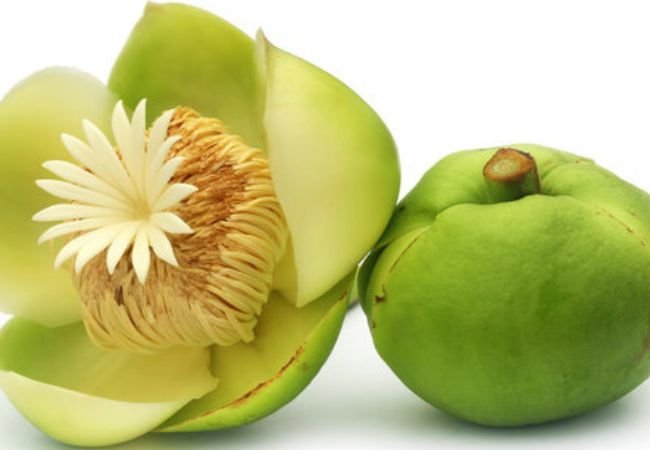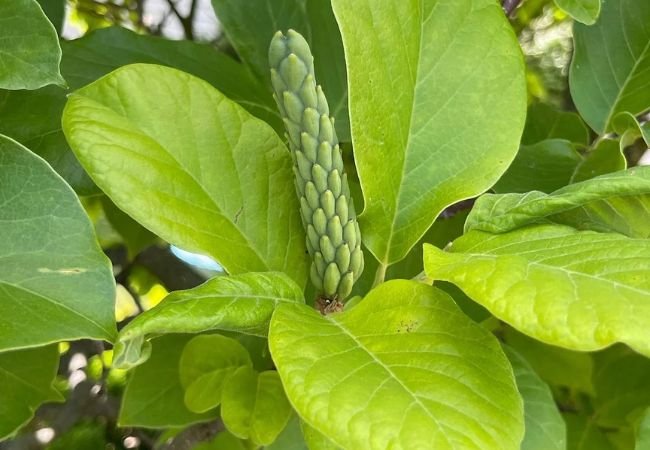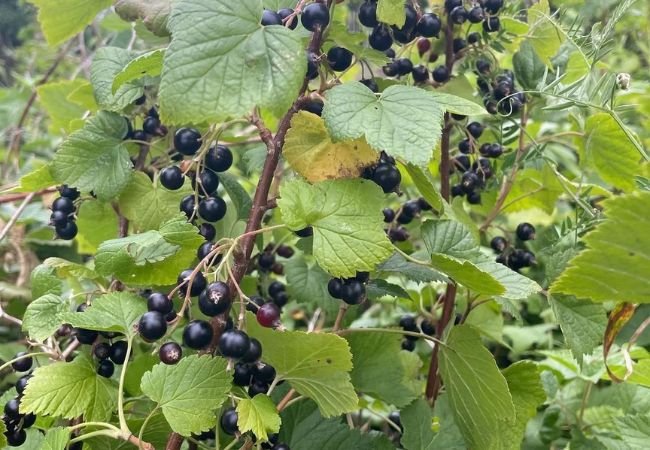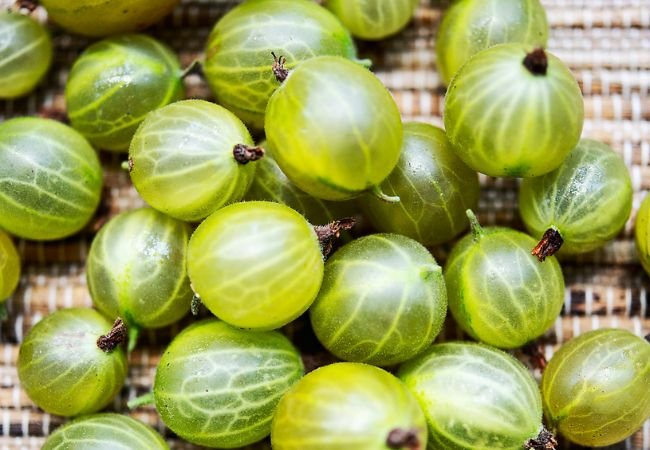Discover Delicious 10 Fruits That Start with H
Explore tasty fruits that start with the letter H. From honeydew to huckleberries, learn about their flavors, health benefits and how to enjoy them.
Have you ever thought about fruits that start with the letter H? There are many delicious and healthy options out there. In this article, we’ll take a look at some of these fruits, their tastes, health benefits and how you can enjoy them. Whether you love fruits or are just curious, you’re in for a treat!
1. Honeydew: The Sweet and Juicy Melon
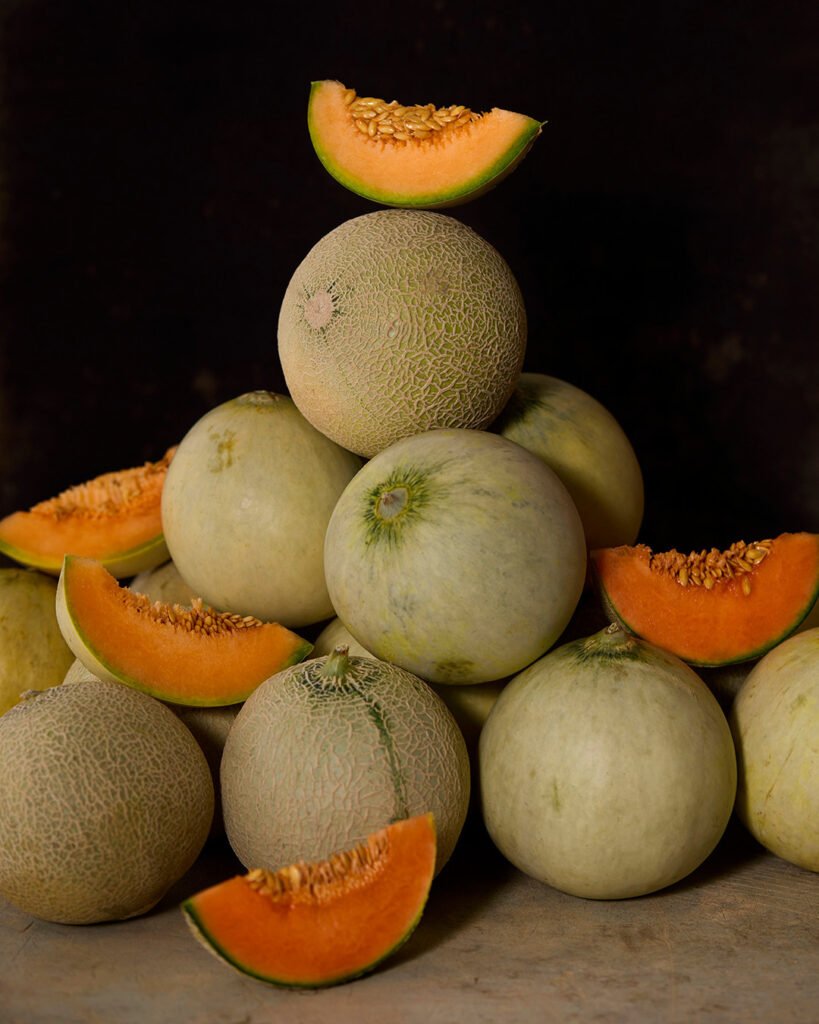
Here’s a detailed chart for Honeydew:
| Attribute | Details |
|---|---|
| Botanical Name | Cucumis melo var. cantalupensis |
| Common Name | Honeydew Melon |
| Plant Name | Honeydew |
| Zone | USDA Hardiness Zones 4 to 11 |
| Sun Exposure | Full sun |
| Soil Type | Well-drained, loamy soil; prefers slightly acidic to neutral pH |
| Watering | Regular watering; keep soil consistently moist but not waterlogged |
| Growth Habit | Annual vine |
| Height/Spread | Height: 1 to 2 feet (0.3 to 0.6 meters); Spread: 6 to 8 feet (1.8 to 2.4 meters) |
| Special Features | Produces sweet, pale green flesh with smooth, light green rind; requires warm temperatures; good for fresh eating and in salads |
Honeydew is a well-known fruit that starts with H. This melon is loved for its sweet, juicy flavor and refreshing taste.
- Taste: Sweet and mild
- Texture: Juicy and smooth
- Health Benefits: Full of vitamin C and potassium, helps keep you hydrated
- How to Enjoy: Eat it fresh, add to fruit salads, or blend into smoothies
Did you know? Honeydew melons have been enjoyed for centuries. Learn more about honeydew melons from the University of California.
2. Huckleberry: The Wild and Tangy Berry
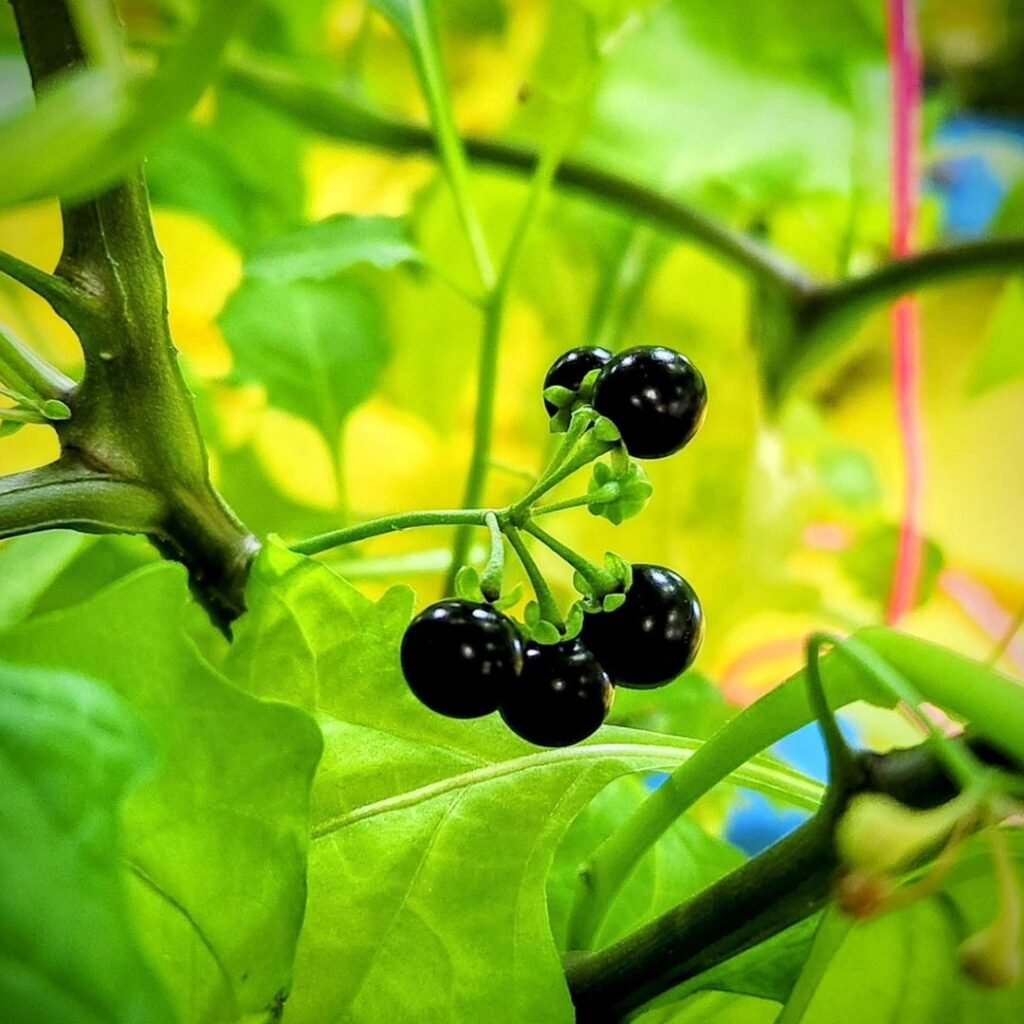
Here’s a detailed chart for Huckleberry:
| Attribute | Details |
|---|---|
| Botanical Name | Vaccinium spp. (varies by species) |
| Common Name | Huckleberry |
| Plant Name | Huckleberry |
| Zone | USDA Hardiness Zones 3 to 7 |
| Sun Exposure | Full sun to part shade |
| Soil Type | Well-drained, acidic to neutral soil; prefers sandy or loamy soil |
| Watering | Regular watering; keep soil consistently moist but not waterlogged |
| Growth Habit | Deciduous shrub or small bush |
| Height/Spread | Height: 1 to 6 feet (0.3 to 1.8 meters); Spread: 1 to 4 feet (0.3 to 1.2 meters) |
| Special Features | Produces small, edible berries with a sweet-tart flavor; attractive foliage with fall color; important for wildlife; varies by species in berry color and flavor |
Huckleberries are small, round berries native to North America. They have a unique, tangy flavor.
- Taste: Tart and sweet, similar to blueberries
- Texture: Juicy with a slightly gritty texture
- Health Benefits: Packed with antioxidants, vitamin C, and fiber
- How to Enjoy: Eat fresh, use in jams, pies, or as a topping for pancakes
Interesting Fact: Huckleberries are a favorite food of bears! Read about huckleberries from the Montana State University Extension.
3. Horned Melon: The Spiky Exotic Fruit
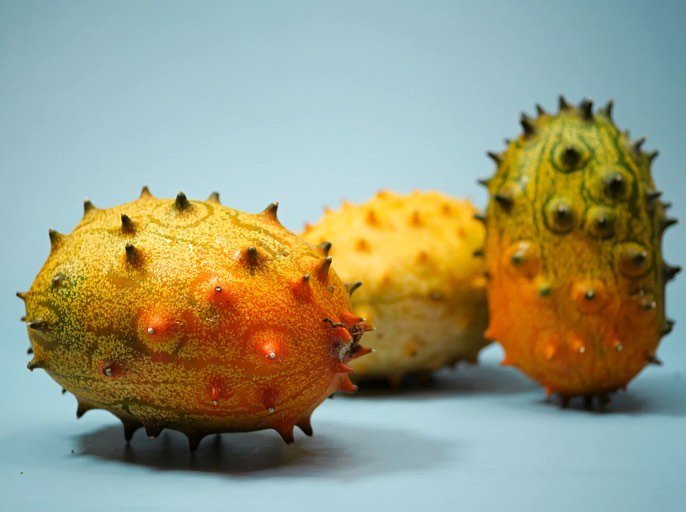
Here’s a detailed chart for Horned Melon:
| Attribute | Details |
|---|---|
| Botanical Name | Cucumis metuliferus |
| Common Name | Horned Melon, Kiwano, African Horned Cucumber |
| Plant Name | Horned Melon |
| Zone | USDA Hardiness Zones 9 to 11 |
| Sun Exposure | Full sun |
| Soil Type | Well-drained, loamy or sandy soils; prefers slightly acidic to neutral pH |
| Watering | Regular watering; keep soil consistently moist but not waterlogged |
| Growth Habit | Annual vine |
| Height/Spread | Height: 1 to 2 feet (0.3 to 0.6 meters); Spread: 6 to 8 feet (1.8 to 2.4 meters) |
| Special Features | Produces spiky, orange or yellow fruit with a jelly-like green interior; unique appearance and flavor; used in fruit salads, cocktails, and as a garnish |
Horned melon, also known as kiwano, is an exotic fruit from Africa. Its spiky orange skin and bright green inside make it unique.
- Taste: A mix of banana, cucumber, and lime
- Texture: Gel-like with edible seeds
- Health Benefits: Good source of vitamin C, potassium, and antioxidants
- How to Enjoy: Scoop out the flesh and eat fresh, add to fruit salads, or use as a garnish
Fun Fact: Horned melon is often used in decorations because of its unique look. Discover more about horned melon from the University of Florida.
4. Hackberry: The Crunchy Tree Fruit
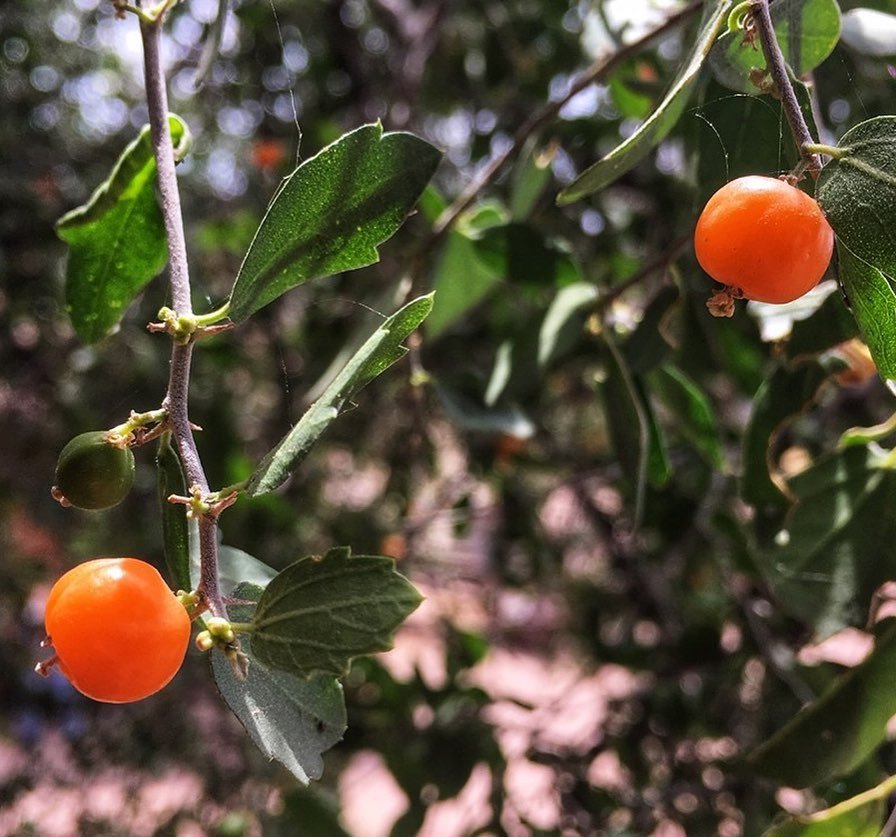
Here’s a detailed chart for Hackberry:
| Attribute | Details |
|---|---|
| Botanical Name | Celtis occidentalis (Common Hackberry) or Celtis laevigata (Sugarberry) |
| Common Name | Hackberry, Sugarberry |
| Plant Name | Hackberry |
| Zone | USDA Hardiness Zones 3 to 9 |
| Sun Exposure | Full sun to part shade |
| Soil Type | Adaptable to various soil types; prefers well-drained soil but can tolerate clay or sandy soils |
| Watering | Regular watering; drought-tolerant once established |
| Growth Habit | Deciduous tree or large shrub |
| Height/Spread | Height: 30 to 60 feet (9 to 18 meters); Spread: 30 to 50 feet (9 to 15 meters) |
| Special Features | Produces small, edible drupes; attractive bark and foliage; provides good wildlife habitat; tolerant of urban conditions |
Hackberries are small, sweet fruits from the hackberry tree. They have been eaten by humans for a long time.
- Taste: Sweet and nutty
- Texture: Crunchy with a hard seed inside
- Health Benefits: Contains fiber, antioxidants, and vitamin C
- How to Enjoy: Eat fresh, use in baking, or make into jams
Did you know? Hackberries have been found in ancient sites, showing they have been eaten for centuries. Learn about hackberries from the USDA.
5. Hawthorn: The Healthy Berry
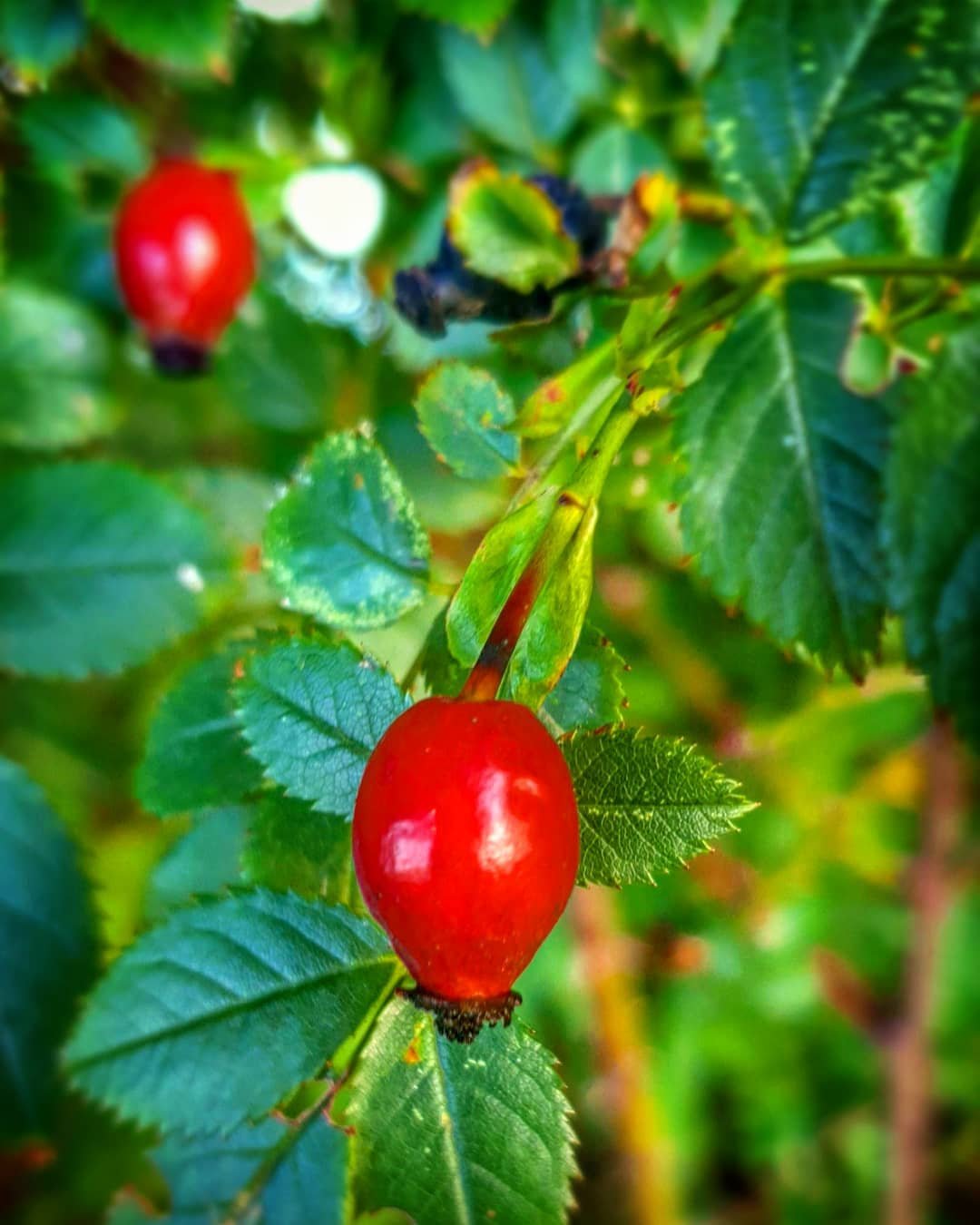
Certainly! Here’s an easy-to-understand chart with information about Hawthorn fruit:
| Aspect | Details |
|---|---|
| Botanical Name | Crataegus spp. |
| Common Name | Hawthorn |
| Plant Type | Deciduous tree or shrub |
| Hardiness Zone | Varies by species, typically Zones 3-9 |
| Sun Exposure | Full sun to partial shade |
| Soil Type | Well-drained, loamy soil |
| Watering Needs | Moderate |
| Growth Habit | Rounded, spreading |
| Height/Spread | Varies widely by species |
| Special Features | Edible red or black berries, often used in jams and teas |
Hawthorn berries have been used for their health benefits for a long time. These small, red berries are very nutritious.
- Taste: Tart and slightly sweet
- Texture: Firm with small seeds
- Health Benefits: Good for heart health, high in antioxidants, and vitamin C
- How to Enjoy: Make into teas, tinctures or jams
Interesting Fact: Hawthorn berries are used in traditional Chinese medicine. Read more about hawthorn berries from the University of Maryland Medical Center.
6. Honeyberry: The Sweet Blue Fruit
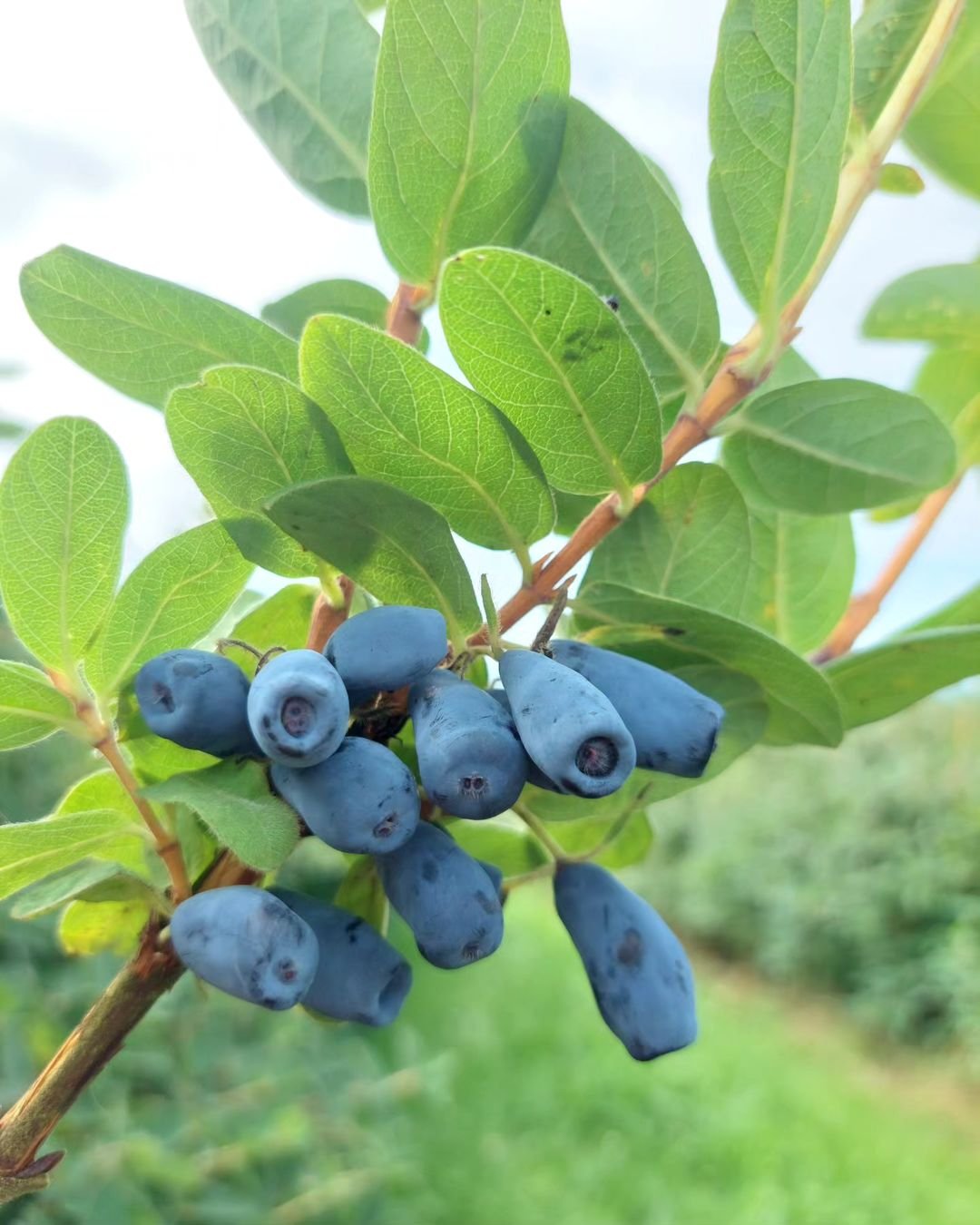
Here’s a chart with information about Honeyberry fruit:
| Aspect | Details |
|---|---|
| Botanical Name | Lonicera caerulea |
| Common Name | Honeyberry |
| Plant Type | Deciduous shrub |
| Hardiness Zone | Zones 2-7 |
| Sun Exposure | Full sun to part shade |
| Soil Type | Well-drained, fertile soil |
| Watering Needs | Moderate |
| Growth Habit | Upright, spreading |
| Height/Spread | 3-6 feet tall, 3-5 feet wide |
| Special Features | Edible blueberry-like fruits with sweet-tart flavor |
Honeyberries are small, blue fruits that are related to honeysuckle. They taste similar to blueberries but with a twist.
- Taste: Sweet with a tangy kick
- Texture: Soft and juicy
- Health Benefits: Rich in antioxidants, vitamin C, and fiber
- How to Enjoy: Eat fresh, use in baking, or blend into smoothies
Fun Fact: Honeyberries can grow in cold climates, making them a great choice for northern gardens. Find out about honeyberries from the University of Saskatchewan.
7. Hog Plum: The Tangy Tropical Fruit
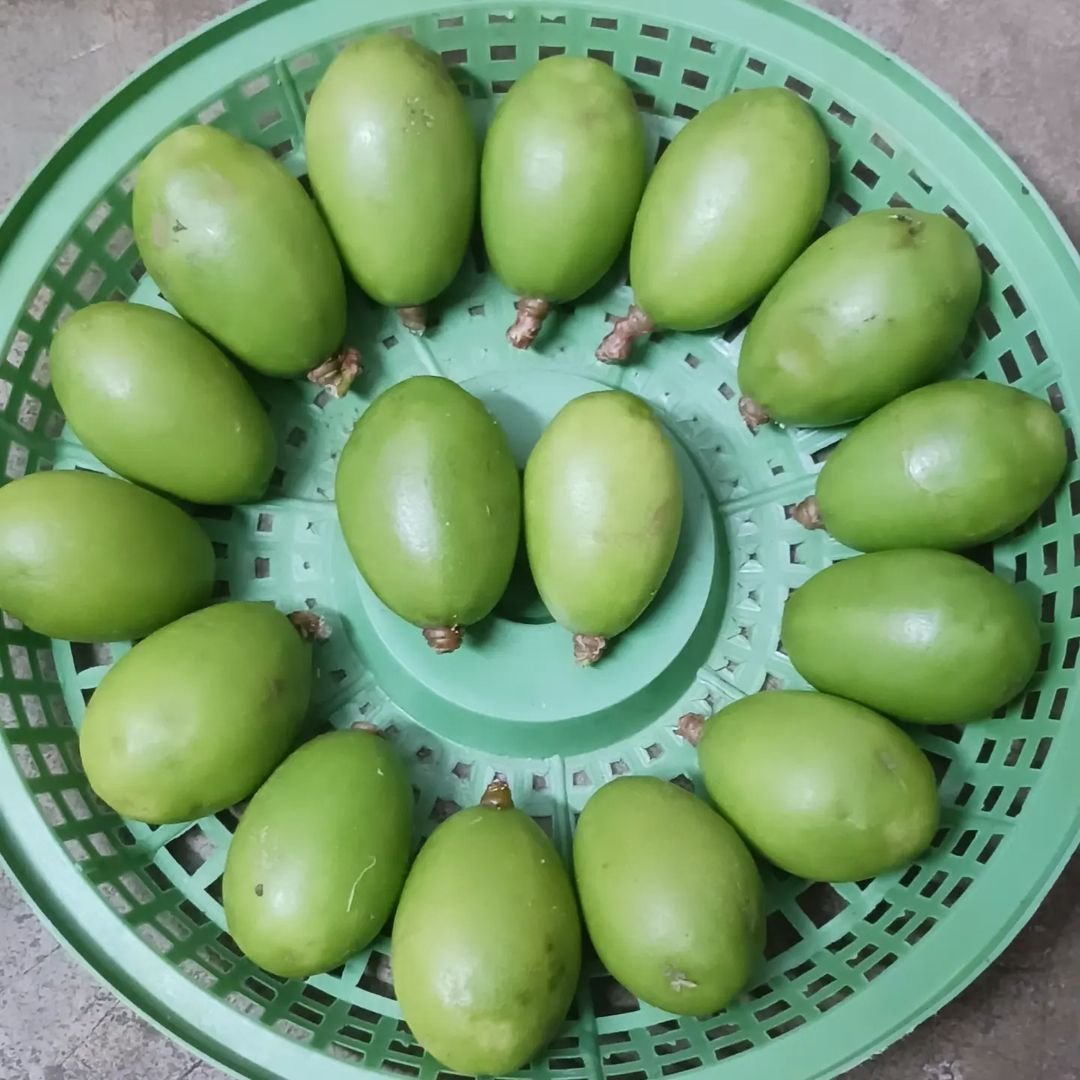
Here’s a chart with information about Hog Plum fruit:
| Aspect | Details |
|---|---|
| Botanical Name | Spondias mombin |
| Common Name | Hog Plum |
| Plant Type | Deciduous tree |
| Hardiness Zone | Zones 10-11 (tropical regions) |
| Sun Exposure | Full sun |
| Soil Type | Well-drained |
| Watering Needs | Moderate |
| Growth Habit | Spreading canopy |
| Height/Spread | Up to 50 feet tall, 30-40 feet spread |
| Special Features | Edible fruit with tangy-sweet flavor, used in jams and beverages |
Hog plums are tropical fruits that grow in warm climates. These small, oval fruits have a tangy flavor.
- Taste: Tart and tangy
- Texture: Juicy with a fibrous pit
- Health Benefits: High in vitamin C, antioxidants, and fiber
- How to Enjoy: Eat fresh, use in sauces, jams, or chutneys
Did you know? Hog plums are used in traditional medicine in many cultures. Explore more about hog plums from the University of Hawaii.
8. Heirloom Tomato: The Garden Favorite
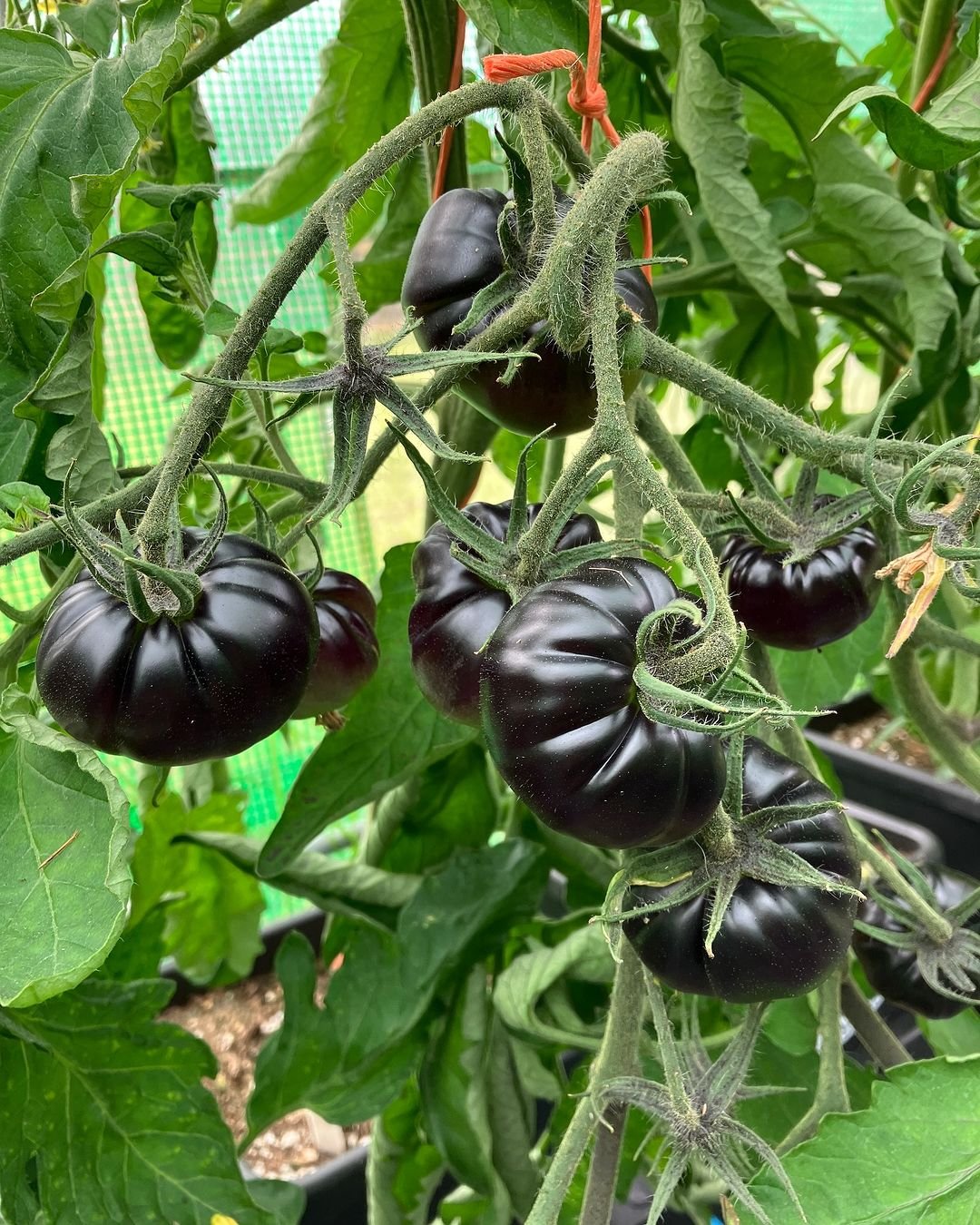
Here’s a chart with information about Heirloom Tomato fruit:
| Aspect | Details |
|---|---|
| Botanical Name | Solanum lycopersicum |
| Common Name | Heirloom Tomato |
| Plant Type | Annual vegetable |
| Hardiness Zone | Zones 2-11 (grown as annuals) |
| Sun Exposure | Full sun |
| Soil Type | Well-drained, fertile soil |
| Watering Needs | Regular |
| Growth Habit | Indeterminate (vining) |
| Height/Spread | 4-8 feet tall, spreads widely |
| Special Features | Wide variety of colors, shapes, and flavors; prized for unique taste and historical significance |
Heirloom tomatoes are cherished in gardens and kitchens for their rich flavors and vibrant colors.
- Taste: Ranges from sweet to tangy
- Texture: Juicy and fleshy
- Health Benefits: Rich in vitamins A and C, potassium, and lycopene
- How to Enjoy: Eat fresh in salads, sandwiches, or cook into sauces
Interesting Fact: Heirloom tomatoes come in many shapes, colors, and sizes, each with its own unique taste. Learn about heirloom tomatoes from the University of Missouri.
9. Hazelnut: The Nutty Fruit
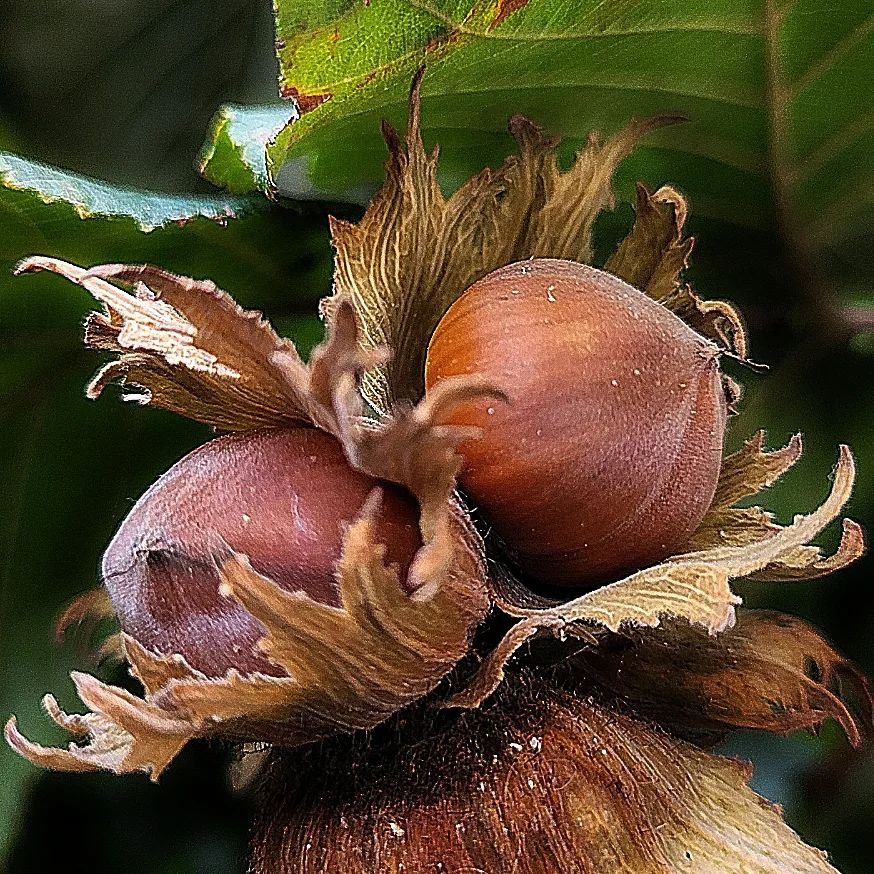
Here’s a chart with information about Hazelnut fruit:
| Aspect | Details |
|---|---|
| Botanical Name | Corylus avellana |
| Common Name | Hazelnut |
| Plant Type | Deciduous shrub or small tree |
| Hardiness Zone | Zones 4-9 |
| Sun Exposure | Full sun to partial shade |
| Soil Type | Well-drained, fertile soil |
| Watering Needs | Moderate |
| Growth Habit | Multi-stemmed, spreading |
| Height/Spread | 10-20 feet tall, similar spread |
| Special Features | Edible nuts enclosed in a husk, used in culinary applications like chocolates, spreads, and baking |
Hazelnuts, though often thought of as nuts, are actually the fruit of the hazel tree. They are full of flavor and nutrients.
- Taste: Sweet and nutty
- Texture: Crunchy
- Health Benefits: High in healthy fats, vitamin E, and antioxidants
- How to Enjoy: Eat raw, roasted, or use in baking and desserts
Fun Fact: Hazelnuts are a key ingredient in popular spreads like Nutella. Read more about hazelnuts from Oregon State University.
10. Hardy Kiwi: The Cold-Climate Kiwi
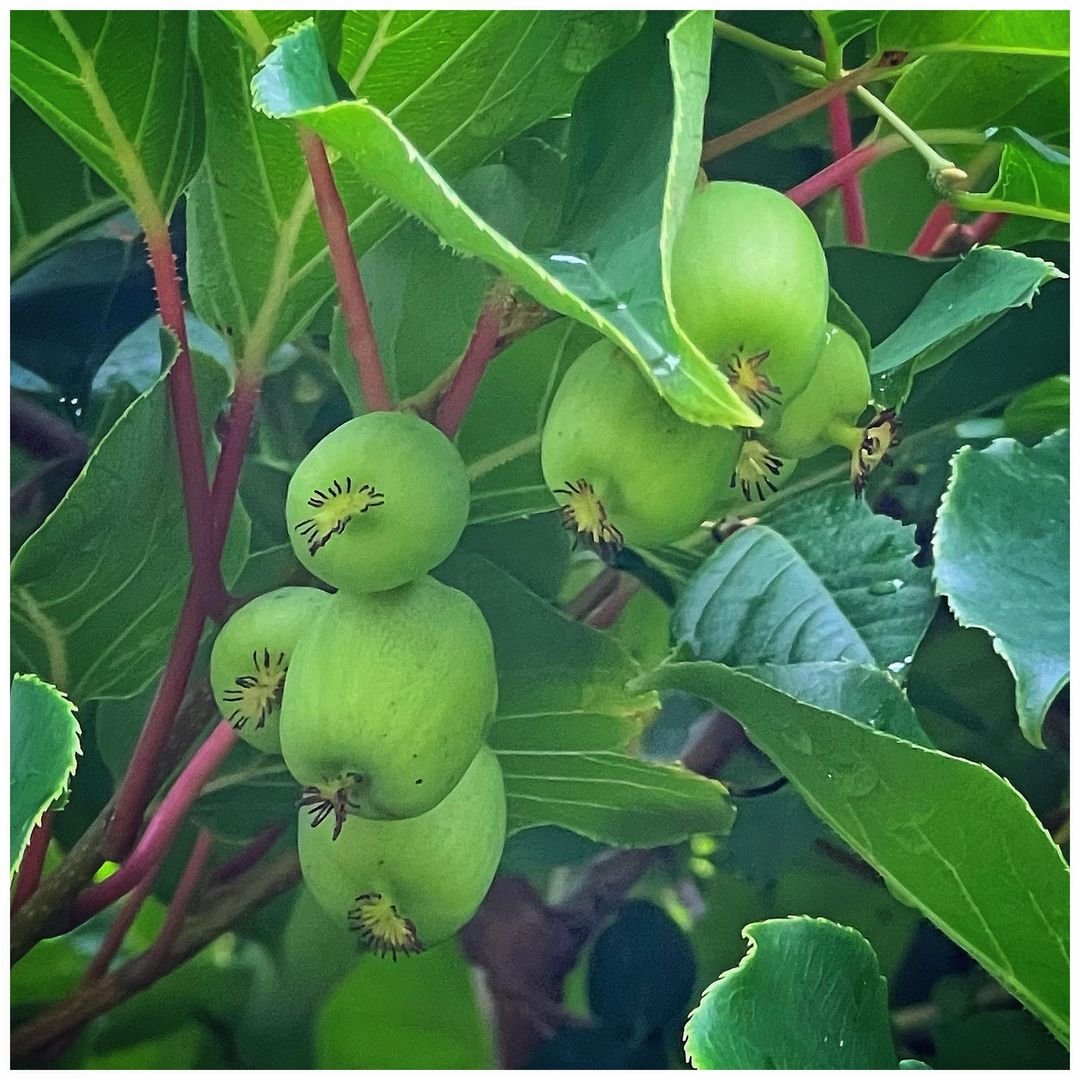
Here’s a chart with information about Hardy Kiwi fruit:
| Aspect | Details |
|---|---|
| Botanical Name | Actinidia arguta |
| Common Name | Hardy Kiwi |
| Plant Type | Deciduous vine |
| Hardiness Zone | Zones 4-9 |
| Sun Exposure | Full sun to part shade |
| Soil Type | Well-drained, fertile soil |
| Watering Needs | Moderate |
| Growth Habit | Climbing |
| Height/Spread | Vines can reach 15-20 feet in length |
| Special Features | Small, smooth-skinned fruits, often sweeter than traditional kiwi, rich in vitamin C |
Hardy kiwi, also known as baby kiwi, is a small, smooth-skinned fruit that can be grown in colder climates.
- Taste: Sweet and slightly tangy, similar to regular kiwi
- Texture: Juicy and smooth, with edible skin
- Health Benefits: High in vitamin C, fiber, and antioxidants
- How to Enjoy: Eat fresh, add to fruit salads or use as a topping for desserts
Fun Fact: Hardy kiwi is often eaten whole, skin and all. Discover more about hardy kiwi from the University of Minnesota.
From the sweet honeydew to the exotic horned melon, fruits that start with H offer a variety of flavors, textures and health benefits. Adding these fruits to your diet can bring new tastes and boost your nutrient intake. Next time you’re at the store or market, try one of these fruits that start with H—you might find a new favorite!
Eating a variety of fruits is a great way to get a range of vitamins, minerals and other nutrients. So go ahead and explore the world of fruits starting with H—your taste buds and body will thank you!

